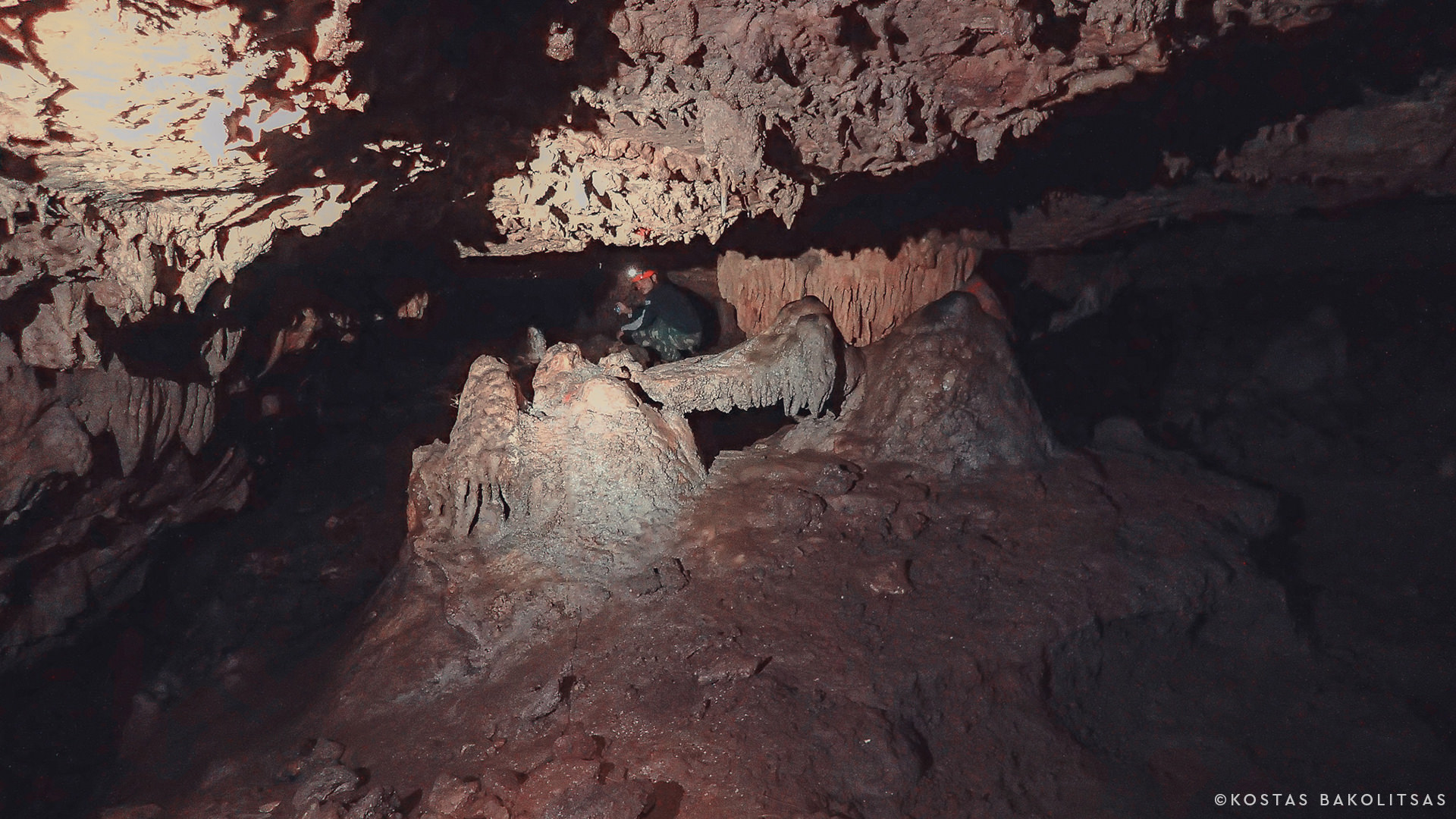The caves of Meganisi
In Meganisi, as in neighboring Lefkada, there are several caves which are of intense speleological interest. Nevertheless, none of them are utilized for tourism, while entering them is not recommended, as it involves several serious risks for those not experienced with the subject.
Their mention here is made exclusively for informational purposes and in no case as an invitation to visit them.
Papa Spilia or Cave of Papanikolis
It is one of the largest underwater caves in the world and is certainly the best known of the caves of Meganisi. It can only be approached from the sea. Inside the cave is a small sandy beach. Tradition says that a priest and his disciples fled here during the Turkish occupation to escape the pirates. Also, it is rumored that it was one of the hiding places of the Papanikolis submarine during the Second World War.
The cave of Cyclops is located above Spilia port, at a height of 50m. from the surface of the sea. It was known since ancient times, while tradition states that it was used by the Cyclops Polyphemus as a sheepfold. The entrance to the cave is very low, so you almost crawl in, while most of the interior has the same low height. Only at the depth of the cave is its height greater than 5 meters.
Horafaki Cave
The entrance to the cave is through a narrow gap between two rocks, while the descent inside is quite difficult and dangerous for inexperienced visitors. It has quite rich decoration and more than two chambers.
Cave of Giovani or Dramia Cave
A cave that for years was used to herd the animals of the shepherd Giovanis. Its spacious interior has interesting decoration and narrow passages. The precipitations that have occurred inside the cave remind the visitor of the strong and frequent seismicity of the wider Ionian region.
Who was Jovanis or Giovanis (as he was called in Meganisi)
The famous shepherd of the last century, from the mountainous Egluvi of Lefkada, Yiannis Kontogiorgis (1866-1960), with the nickname “Tsovanis” – which he acquired in the Occupation, because the Italians called him “Giovanni” – is said to have run out of competition, for historically unexplained reasons, in the first Olympic Marathon in 1896 and finished ahead of the winner, Spiro Louis, but was stopped outside the Kallimarmaro Stadium since his participation was unofficial. The elders of Egluvi remember their fathers narrating the incident as a reality and not as a fairy tale.
There is no evidence, apart from a photograph at the starting point of the Marathon Road in 1896 in which a runner without a number is depicted, which is Tzovanis himself; a vague newspaper report of the time (Nea Efimeris, 1.3.1896, p. 4) about two runners from Lefkada who arrived in Athens via Patras; that many runners were not accepted by the committee; and a publication in an Australian newspaper of the expatriate community, from the 60s, with the title: “Yiannis Kontogiorgis – Tzovanis, a world glory lost in the years of hardship.” What remains to be thoroughly researched are the newspaper articles from the time of the first Olympic Games and especially the omitted ones, which for a long time, after the end of the Games, preoccupied the press.
The book by Dimitris E. Soldatou’s “Tsovanis – The Shepherd Marathon Runner”, from which the above information was taken, includes a literary reconstruction of Tsovanis’ feat in the form of a short story, his family tree, incidents from his life, songs written about him and photographs.
Read the relevant article of the “Free LEFKAS” newspaper in PDF format [HERE]




